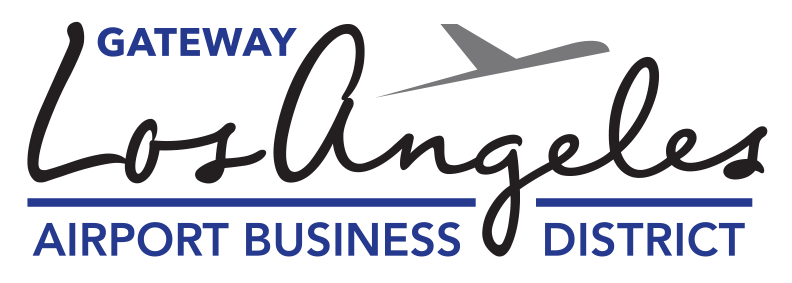(Los Angeles, CA) In the first 12 hours since opening at 3 a.m., the LAX-it taxi and ride app pickup lot has made significant improvements to the traffic flow through the Central Terminal Area (CTA) at Los Angeles International Airport (LAX).
LAX-it was opened to help mitigate the impacts that major construction will have on traffic within the CTA as Los Angeles World Airports begins construction on numerous projects to transform the airport, including an Automated People Mover train opening in 2023.
The opening of LAX-it on Tuesday moved taxi and ride app pickups out of the Central Terminal Area.
Metrics tracked throughout the day show that both the upper and lower levels have benefited from moving the taxi and ride app pickups to an area near, but out of, the CTA. Airport officials noted a large number of guests taking advantage of the ease of accessing taxis on the first curb, and have seen a large number of passengers choosing to walk to the lot.
Airport officials will be closely monitoring metrics during the first full week of operations, as traffic patterns change frequently, and will continue to provide updates to the media.The airport will use data and experience to continue to refine the pickup process and improve the guest experience over time.
Key metrics from the first 12 hours of operation of LAX-it include:
TAKING THE LAX-it SHUTTLE:
Average time for shuttle to arrive at each terminal – 4 minutes
Average time for shuttle to load – 1 minute
Average transit time from terminals to LAX-it – 10 minutes
AT LAX-it:
Average time from a guest arriving at LAX-it to getting in a taxi and it pulling away from the curb – 8 minutes
Average time from a guest arriving at LAX-it to getting an Uber or Lyft and it pulling away from the curb – 18 minutes
CENTRAL TERMINAL AREA:
CTA upper level travel time – 50% faster over the same period last week
CTA lower level travel time – consistent, with a 10% improvement during morning peak time over the same period last week
Reduction in number of vehicles entering the CTA compared to the same period last week - 8,552
MAIN ACCESS ARTERIES
During the late morning peak, traffic speeds over the same day and time the previous week from:
The I-105 – 360% faster (from 5.9 to 27.7 mph);
The 405 & Century to LAX – 180% faster (from 8.0 to 23.1 mph); and
Howard Hughes Parkway – 45% faster (from 11.8 to 17.2 mph)
CUSTOMER FEEDBACK ON LAX-IT SHUTTLE EXPERIENCE:
76 percent excellent
18 percent good
5.3 percent terrible
ADVERTISING AND OUTREACH:
200 new interior signs and 500 new exterior signs
Advertising – Over 100,000 impressions served, with 1,000 ad clicks
Social media – 10,000 engagements on Facebook & Instagram
LAX-it video – LAX-it video playing on free Wi-Fi logon screens and 3,000 completed views
The airport will continue to closely monitor these and other metrics and adjust operations at LAX-it, within the CTA and on the streets feeding into LAX to continue to improve the efficiency, safety and reliability of LAX-it and our CTA. Signage is being reviewed, augmented and adjusted to improve traffic flow and wayfinding for drivers and guests within the terminals and CTA, at LAX-it and on the surrounding streets as traffic fluctuates with surrounding business and non-airport commute activities.
LAX-it, which is located east of Terminal 1, will reduce the number of vehicles in the CTA by 15 percent.
About Los Angeles International Airport (LAX)
LAX, the fourth-busiest airport in the world and second busiest in the United States, was named a top-10 U.S. airport by SKYTRAX. LAX served more than 87.5 million passengers in 2018 and offers an average of 700 daily nonstop flights to 109 cities in the U.S. and 1,281 weekly nonstop flights to 93 markets in 47 countries on 69 commercial airlines. LAX ranks 10th in the world in air cargo tonnage processed, with more than 2.4 million tons of air cargo. LAX handled 707,883 operations (landings and takeoffs) in 2018.
LAX generated 620,600 jobs in Southern California, with labor income of $37.3 billion and economic output (business revenues) of more than $126.6 billion, according to an economic study based on 2014 operations. This activity added $6.2 billion to local and state revenues and $8.7 billion in federal tax revenues. The study also reported that LAX’s ongoing capital improvement program creates an additional 121,640 annual jobs with labor income of $7.6 billion and economic output of $20.3 billion; $966 million in state and local taxes; and $1.6 billion in federal tax revenues.
LAX was honored as having the “Best Overall Customer Service Program” by Airports Council International-North America; named the “Best Airport for Breastfeeding Moms” by Mamava; selected for the Top 10 “Best of the U.S.’s Big Airports” (Wall Street Journal) and “Most Pet-Friendly Airports in the U.S. (Mental Floss); named the second-most improved airport in the U.S. by JD Power; received an “Innovation Award” from the L.A. Better Business Challenge for its Central Utility Plant; and named a “Business Leader in Air Quality” by the South Coast Air Quality Management District.
LAX is also the second-most popular airport in the world to appear on Instagram, according to wego.com. LAX is part of a system of two Southern California airports – along with Van Nuys general aviation – that are owned and operated by Los Angeles World Airports, a proprietary department of the City of Los Angeles that receives no funding from the City’s general fund.
As a covered entity under Title II of the Americans with Disabilities Act, the City of Los Angeles does not discriminate on the basis of disability and, upon request, will provide reasonable accommodation to ensure equal access to its programs, services, and activities. Alternative formats in large print, braille, audio, and other forms (if possible) will be provided upon request.








